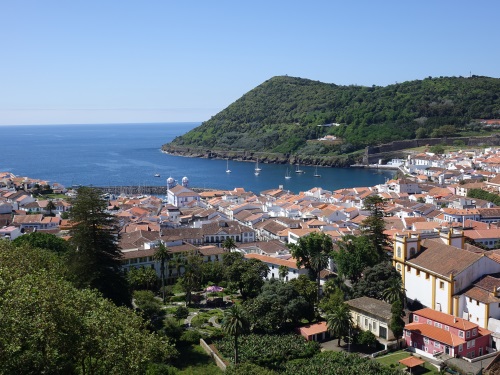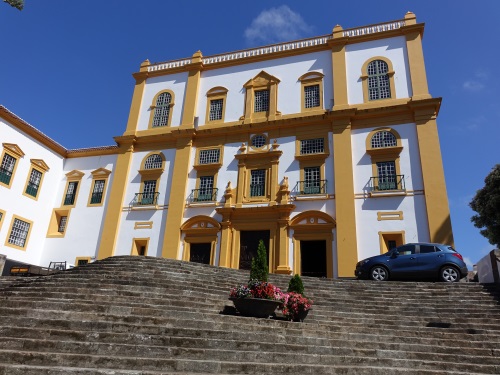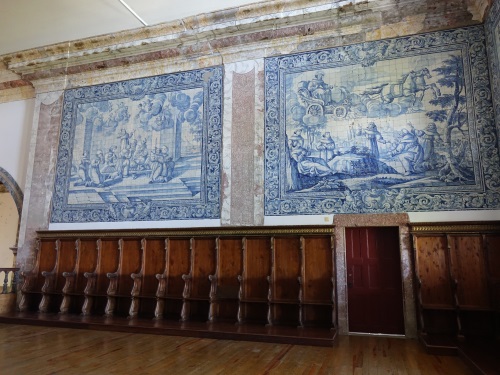Blog WHS Visits
WHS #634: Angra do Heroismo
The Central Zone of the Town of Angra do Heroismo in the Azores was a relatively early WHS (1983). As no nomination files of that period have been made public and the ICOMOS evaluations at the time were concise, the ‘Why’ of the nomination and inscription isn’t well-documented. The only thing that stands out is that Angra was an important port-of-call during the maritime explorations of the 15th and 16th centuries. How this is linked to tangible elements in Angra itself is rather unclear. Maybe just ‘being there’ half-way between Europe, Equatorial Africa and the West Indies was enough.

Angra is located on the island of Terceira, one of the 9 islands of the Azores. To get there I used the weekly direct flight by charter company TUI from Amsterdam to Terceira. My fellow passengers on the full flight were mostly Dutch senior citizens. The flight to Terceira airport took only 3 hours and 40 minutes, and afterwards I immediately hired a taxi to take me to Angra where I was to stay for 3 nights. My first impression of the town was that it seems colourful and festive (possibly related to the weeklong Sao Jao festival), and not overly touristy.
It was still way too early to check-in to my hotel, so I decided to start with the 1.5 hour walking tour of the town center that is described in the Bradt travel guide. It connects several churches and other points of (low) interest such as an embroidery museum. Walking Angra’s streets is exhausting, as the town is plastered on to a hill with steep ascents. Among the town’s main features are its brightly painted buildings in various colours. It resembles the baroque towns of Brazil, but here in Angra it all seems brand new. And in a way it is – some 70% of the buildings in the historic center were demolished in a big earthquake in 1980. Since then they have all been reconstructed.

Besides the pretty facades most of the buildings aren’t very spectacular on the inside (or aren’t accessible at all). The one that I enjoyed the most was the Convento de Sao Francisco, which now houses the City Museum. The convent’s church and the tableaux of azulejos on the second floor are just great. Another aspect not to miss is the walk through the Duke of Terceira’s Garden up to Memorial Hill – from there you will have the great views and photo opportunities of the bay of Angra and the remains of the two fortresses that once guarded it.
I stayed overnight in the Posada de Sao Sebastiao, located in one of the two main fortresses around Angra harbour and thus an essential part of the WHS. It still looks impressive when you walk up there. It is a bit of an empty shell however. Directly behind the gate the modern hotel starts, which isn’t really worth the considerable sum they charge per night.

One of the ‘issues’ with Angra is that it isn’t a real port anymore. Sure there is a small marina for private yachts, but the lively atmosphere of an active port is totally lacking. It was a safe harbour during the Age of Exploration, the island of Terceira being protected by dozens of fortresses. Many churches and a hospital were built to take care of the sailors passing by that were in need of a rest. Pirates hovered around to try to capture a booty. Ship wrecks and anchors still can be found in Angra’s former harbour. Nowadays there’s even an underwater archaeology park where divers can have a look at those.
Els - 1 July 2017